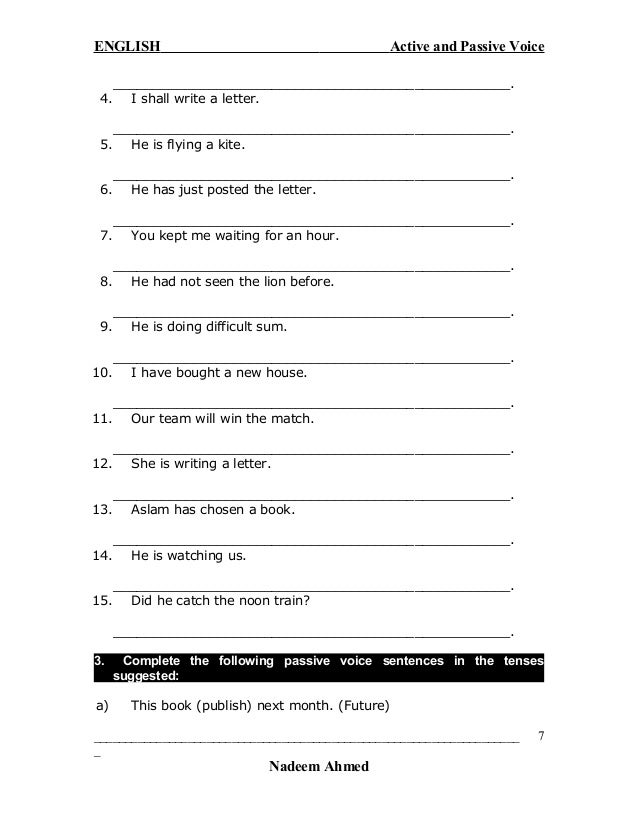Active To Passive Voice Change Software
Anonymousonline converterThis is the closest I've found. Note that the most difficult part is changing the verb form from active to passive, and you should learn these forms so well that you can do them in your sleep if you really want to learn English.

If you let a piece of software do this for you, you will never learn English. Here are the skills you should have. If you don't have these skills, then delay exercises where you have to convert active to passive until you have these skills. For any verb, be able to tell what its past participle is. Take >taken; choose >chosen; bring >brought; wait >waited; send >sent 2.
Passive Voice. If you change the sentence slightly. But you can use passive and active voice in more complex constructions.
For any verb, be able to say what tense it is. Took >Past; said >Past; will go >Future; makes >Present 3. For any tense, be able to place 'to be' in that tense. Past >was, were; Past Perfect >had been; Future >will be; Present >am, is, are 4. Be able to tell whether the subject of a sentence is singular or plural. PhilipThe essential point is that there is no better place than English Forums to do this type of thing.
Here at EF we can not only help with any conversion, but we can also say whether such a conversion is advisable/desirable/appropriate. Airbus Fmgs Trainer Download. Ps (and this is strictly a personal view): Conversion is rarely appropriate. It's not something native speakers do naturally, unless we are at school learning the values (?) of the passive in formal situations. Those of us who use passive constructions when appropriate normally do so automatically, not as a result of conversion. Indeed, being a bit of a past-his-sell-by-old ****, I tend to over-use the passive, Before I submit some of the things I write, I convert some of my constructions from a rather stuffy passive to a more natural active. The conversion from active to passive has rarely been carried out by me.
Passive and Active Voice In the passive voice the subject is acted upon. The passive voice is useful when the writer needs to be sensitive (say something delicately) or needs to focus on the subject being acted upon. However, the passive voice should be used sparingly, especially in academic writing. This voice can be long-winded and slow.
The use of any form of 'to be' can be considered passive. Passive Voice Two examples of passive voice are: 'Steps to ensure reliability and validity of research, analysis, and results were taken in the study.' 'This research problem and its basis were described clearly and completely by the authors.' (Calvano, 2012). Examples of acceptable use of the passive voice are: The tickets were sold yesterday. (The actor is not known) The flag pole has been broken in half. (The writer is focused on the action.) Active Voice In active voice, the subject is performing the action.
Battlefield Hardline English Language Files Book. The active voice is widely used in the English language. The sentences above can be altered to reflect the active voice: The researcher took steps to ensure the reliability and validity of research, analysis, and results of the study. The authors clearly and completely described the research problem and its basis.